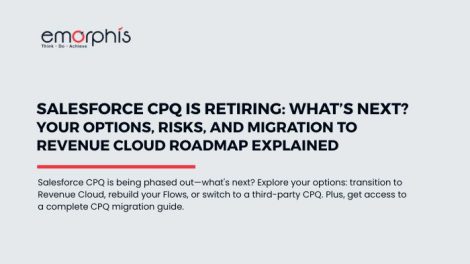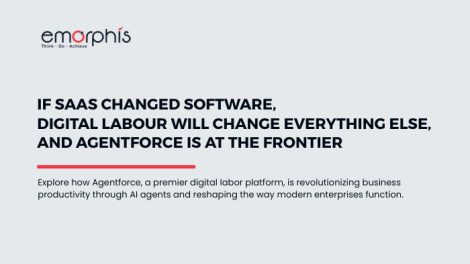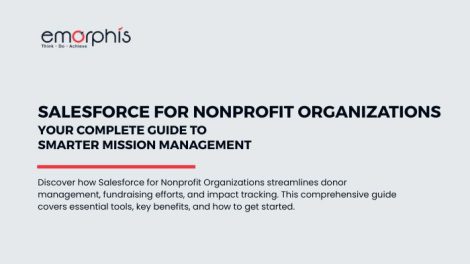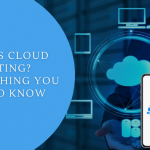Some common quotes are prevailing among the business word:
“Customer is Boss”
“Every Business Empire is Indebted to Customers”
We have to frequently hear such quotes from every businessman present across the globe. Why?
It is because we are living in a world where everything functions as per the demand of the customers. They require companies to offer them a personalized experience that too in a digital format. Previously, enterprises found it difficult to cope up with the desire of their customers. It happened because of the presence of the traditional software systems that although were more familiar, yet severely affect the sales procedure that in turn, presented an incomplete customer profile.
Though they were accepted at some point in history, they have now become obsolete with changing global scenarios. Therefore, any business accepting it will drive towards inefficient systems, furious customers, and losses in business.
But now, it is not the case; all thanks to Salesforce customer 360. It is one of the innovative Salesforce solutions that are helping the companies to meet the aspirations of their customers in the most successful way. Therefore the given article will cover the following crucial aspects:
- What is Salesforce customer 360?
- Features of Salesforce customer 360
- What is the Data Manager of Salesforce customer 360?
- Implementation of customer 360 data manager
- How implementing Salesforce customer 360 data manager is beneficial?
Let’s venture more into the exciting world of Salesforce 360!
What is Salesforce 360?
Salesforce 360 is an integration tool that has the responsibility to collect crucial data from the customers through 3rd party or Salesforce and present them in a unified single view format. It has a full suite of software services that are customized into a single and central platform called Salesforce Sales Cloud CRM efficiently. So, it is an all-in-one platform that helps an organization to get access to new clients, discover and manage the opportunities, focus on streamlining the procedures to provide a delightful experience to their clients.
Now there is a question: How does Salesforce 360 work? To define it, we have to move through various use cases that determine the importance of Salesforce rather than merely serving as an effective CRM system. There are certain solutions provided by Salesforce Customer 360 and convert it into an all-round functioning platform:
- Sales Cloud: Support sales and marketing and customer support
- Service Cloud: Offers customer service and support
- Marketing Cloud: Coordinate marketing relationships by interacting with customers
- Community Cloud: Act as a communication medium between customers and employees
- App Cloud: Contains development tools for the creation of custom apps for Salesforce
- IoT Cloud: Store and processes IoT type data
Features of Salesforce Customer 360
Numerous features define the functioning of the Salesforce Customer 360:
I. Data Unification & Consent Management
Why companies unify their customers’ data? The answer is to create comprehensive and rich customer profiles that include known and unknown data. Notable examples are IDs and cookies. Now with Salesforce consent management, it has become easier to access the customer's data by gaining their consent through digital advertising and email marketing.
II. Advanced Audience Segmentation
With segmentation capabilities, companies can recognize some specific groups to get engaged with their customers effectively. It can be done in numerous ways such as demography, engagement history, and other information. One example is that a company can gather data from web browsing activities for sports enthusiasts who like to purchase sports gear frequently through online and digital channels. They can even take the help of Salesforce consultants and devise a strategy to segment them from rest and create a perfect base for their booking business.
III. Personalized Customer Engagement
Every company wants to have a cordial relationship with its customers. It is possible by active engagement with them through the marketing of the products and services. After striking perfect coordination with their customers, companies can deliver a successful and continuous experience to their customers and brighten their business prospects manifold.
IV. Great Optimization with Einstein Insights
Salesforce is renowned for using Artificial Intelligence (AI) that assists enterprises in analyzing and understanding ways to have a good engagement with customers to win their loyalty and enhance their business performance. With the help of given technology, it is easy to continuously update customer profiles based on their purchasing patterns. In this way, AI can assist companies in driving towards better customer engagement and utmost satisfaction from their products.
Read more at- 7 Salient Features that Clearly Defines Salesforce Customer 360
What is the Data Manager of Salesforce customer 360?
Salesforce Customer 360 Data Manager is a new cross-cloud tool that works for:
- Creation of a common profile for multiple systems
- Enabling data federation services to access source system data
- Eliminating swivel-chair use cases through the inclusion of Salesforce lightning components
Now a question arises: What Customer Data Manager brings in its kitty? It comes with notable aspects that include:
a. Vision
The single focus of the Data Manager of Customer 360 is to create a single customer profile as they start interacting with the brand. It will then offer enterprise real-time customer insight and allows them to take immediate action to meet their requirements and allow Salesforce to move towards the goals.
b. Goal
The end goal of customer 360 through Data Manager is to:
- Identify and enrich customer profile into a single one
- Simplify finding of customer contacts
- Creation of easy insight of customer info and take decisive step according to it
c. Common Identifier
A common data model (or identifier) comes with Data Manager to match the different data sets as per the defined rules. In this way, there is a creation of a common profile that helps in the conversion of aggregate data into a common identifier called 360 ID.
d. Cloud Information Model (CIM)
It is a modern and open specification present in Data Manager that assists Salesforce 360 to create a standard platform for effective communication between different data formats. It not only accelerates digital transformation but also makes integration look easier.
Implementation of Customer 360 Data Manager
Now, let us talk about how to implement a customer 360 Data Manager that is essential for the seamless flowing of data to and from numerous services in a single infrastructure. With the help of data administrators, they work in tandem with departments to get its smooth implementation. Here, five crucial steps will be needed for the successful implementation of Salesforce customer 360 Data Manager:
i. Learn, Play & Get Started
Allow all the stakeholders to be ready to get a better understanding of the customer 360 Data Manager by taking the help of a reputed Salesforce consulting services and develop a plan to proceed successfully onto the next step.
ii. Registration
After getting started, the customer must register them in the cloud to avail services of Data Manager. After registration, each customer is given a unique ID that houses metadata to work on any cloud or org with ease.
iii. Data Load
The next step is mapping, loading, and moving towards complete resolution of data. The responsibility of the data load is in the hand of the admin who configures data objects into Data Manager and generates one customer identity that is known as data load.
iv. Data Sync
The given step focuses on the configuration of data as per the updated rules through admin to respond well to the continuously changing environment. It is called data sync.
v. Enable Use-Cases
In the given step, the admin uses a cloud application to enable certain services as per the present use-cases. One example is the admin using service cloud to enable lightning web components in the application.
How implementing Salesforce customer 360 data manager is beneficial?
Numerous benefits arrive with the implementation of Salesforce 360 Data Manager and end in making an enterprise on a positive note. Notable of them are given in the below section:
1) Not just data, it understands customers in a better way
Whether a customer is changing their email, workplace place, and even city, Data manager helps to address their physical needs through the use of configuration matching criteria and offer a single platform where each member of a family or enterprise can find out their needy items in the most affordable manner.
2) Focus on reduction in overall costs
The most outstanding aspect of Data Manager is that it helps in reducing the maintenance and implementation costs and how it is done? Through the use of external technology that connects Salesforce apps and orgs, there is the complete elimination of the point-to-point integration projects and thus overall costs.
3) Leverage Information in All Systems
Salesforce 360 provides all data in a single system that will benefits other services also. Moreover, the provision of a unified ID helps in building a cordial relationship with the customers and leverages their data to improve the functioning of a business. Furthermore, the provision of a toolkit also helps to strike for a customer to ship from Service Cloud on behalf of Commerce Cloud efficiently.
4) Great Focus on Speedy Innovation
Data Managers focus more on innovation and make it possible by enhancing its speed and reduction in the time to value implementing of the management of customers' data. So, individual customer records are maintained most creatively.
There are some other benefits of Data Manager also and include:
- Simple management and creation of a unique profile of customers to serve across the whole Salesforce ecosystem
- Provision of a centralized hub that users can utilize for connecting with multiple data sources
- Provision of high-quality data within and across the connected system
- Improvement in the exception handling and compliance management
- Improvement in the productivity of service agent
- Anticipate B2C customers to have good interactions with companies having multiple service systems
- The setting is done only once as everything is automated
- Point-and-Click feature for decreasing implementation time in weeks
Key Takeaways
Thus, customer Salesforce 360 and Data Manager are increasingly getting accepted across various platforms due to their integration of numerous cloud platforms on a single infrastructure and offer the customer a seamless integration of Salesforce apps and other data sources efficiently.







